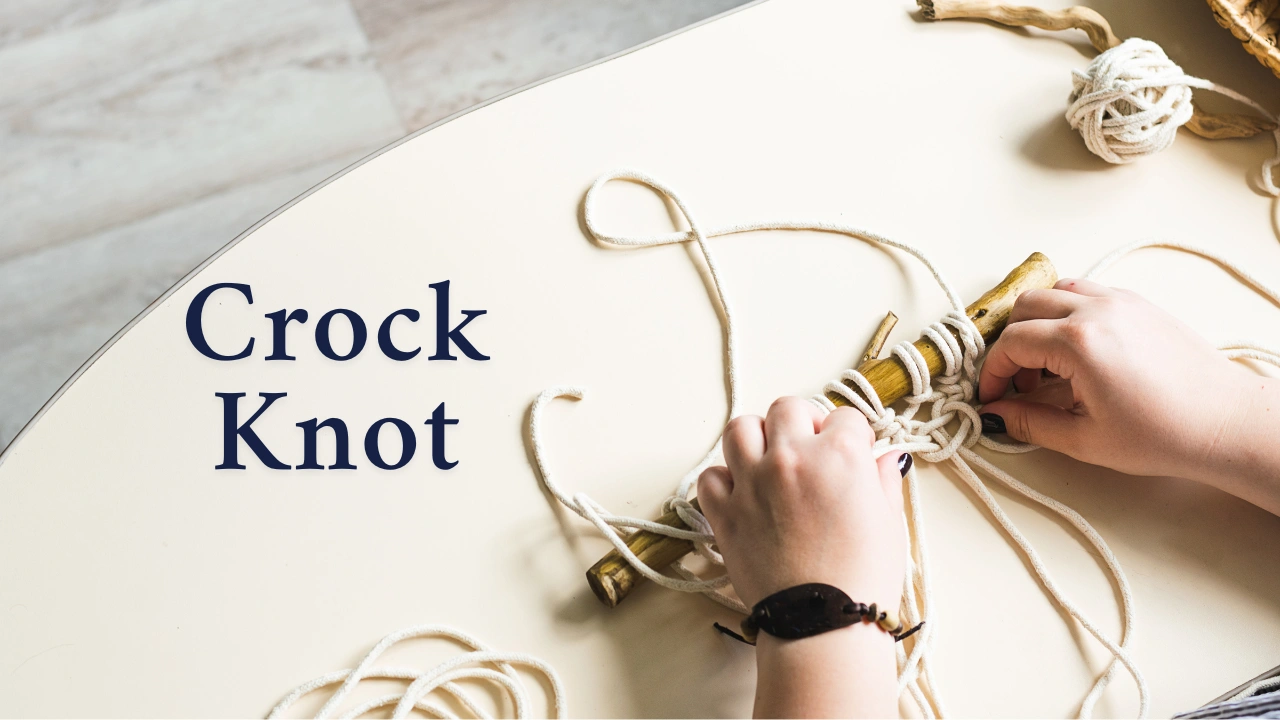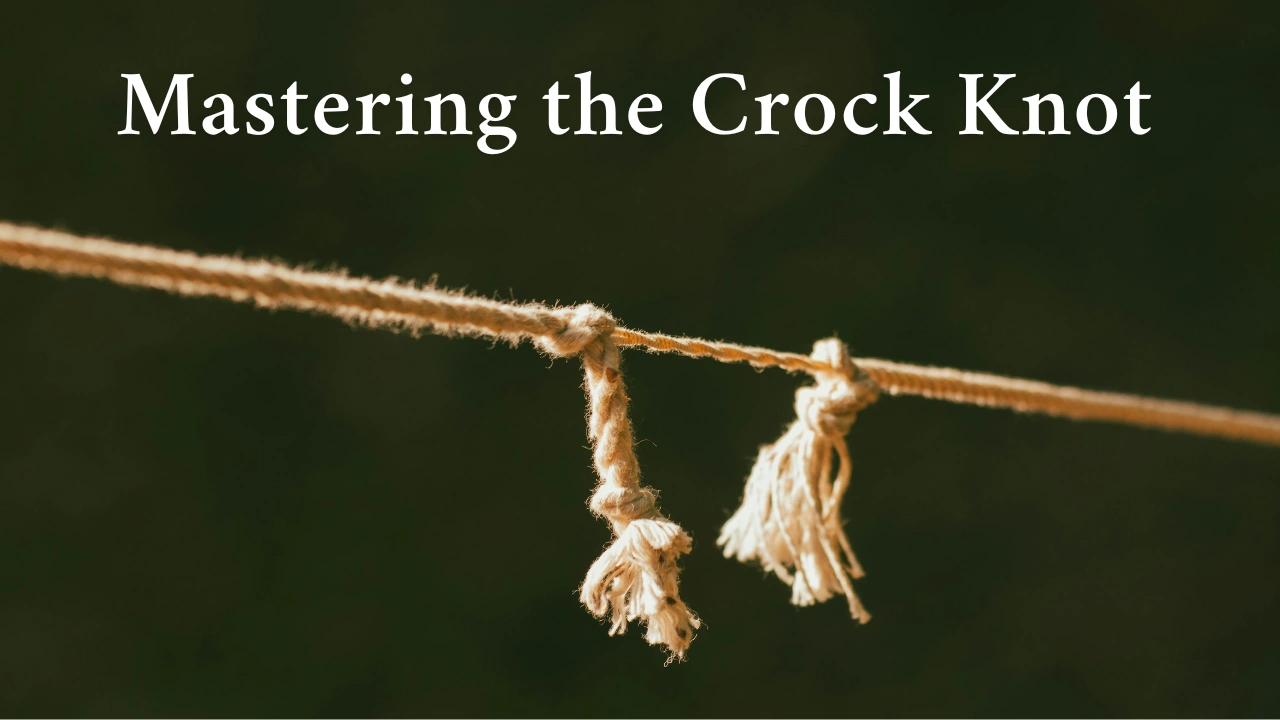Crock Knot Uses Beyond Fishing: Camping, Hiking, and More

When it comes to outdoor adventures like fishing or camping, knowing the right knots is just as important as having the right gear. One knot that has gained attention in recent times is the Crock Knot. Though not widely documented in traditional knot-tying books, the Crock Knot is becoming known in online spaces for its strength, simplicity, and reliability. Whether you’re an angler or someone who loves the outdoors, learning how to tie the Crock Knot can add value to your skills.
Also Read: MailToGzips.org Your Guide to an Emerging Travel Platform
What Is a Crock Knot?
It is described as a knot used to securely join two lines together. It’s believed to be strong and effective under tension, which is why it’s gaining popularity among anglers and campers. People often use the Crock Knot when they want to add a leader line to their fishing line or connect ropes during camping. Although the name “Crock Knot” does not appear in official knot directories, the method closely resembles other popular knots used in fishing and survival activities.
It is important to know that this knot may actually be a variation of existing knots such as the Double Uni Knot or Blood Knot. These knots are known for the same strength and flexibility people now associate with the Crock Knot. However, due to the rise of online tutorials and user-shared techniques, the Crock Knot is becoming a term in its own right.
Why the Crock Knot Is Becoming Popular
Outdoor lovers are always on the lookout for knots that are easy to tie, hold strong under pressure, and are simple to untie after use. It checks all these boxes, making it suitable for beginners and pros. Because of its sturdy structure, the knot doesn’t easily slip, even when exposed to water or wind.
Many people also favor the Crock Knot because it doesn’t need special tools. You can tie it using just your hands, which makes it handy in real-life outdoor situations. For example, if your fishing line breaks while you’re out at sea or by a river, you can tie a Crock Knot quickly to get back in action.
Also Read: Formulagrosses.com Guide to Business and Box Office Analytics
How to Tie the Crock Knot Step-by-Step
The process of tying the Crock is quite simple, though it may take a few tries to get it right. Below is a general guide based on popular techniques associated with it.
- Place two ropes or lines parallel to each other. One will act as the standing line while the other is the working line.
- Use the working line to wrap around both lines about five to seven times.
- Thread the loose end through the loop formed in the initial step.
- Pull both ends to tighten the knot. Make sure the wraps are neat and not overlapping.
- Trim any excess line to avoid slippage or tangling.
Many people describe this tying method as a mix of the Uni Knot and the Surgeon’s Knot. It is often used in both monofilament and braided fishing lines. The key is to keep the wraps tight and evenly spaced so the knot stays secure.
Real Uses of the Crock Knot
It is mainly used in fishing, but its strength and adaptability make it useful in other fields as well. It is excellent for joining ropes of different sizes and materials, which is why hikers and survivalists use it too.
| Use Case | Application |
|---|---|
| Fishing | Joining two lines, tying lures, or attaching leader lines |
| Camping | Connecting ropes for tarps or tents |
| Climbing (light use) | Securing ropes when not using carabiners or heavy equipment |
These applications show how versatile the Crock Knot can be, especially when other equipment is unavailable. However, it’s worth noting that it may not be suitable for life-dependent climbing activities due to the lack of official testing.
Also Read: GIFHQ Your Ultimate Destination for Animated GIFs
Advantages of Using the Crock Knot
The Crock offers several benefits that make it stand out. Its main advantage is its holding strength, especially when tension is applied evenly. It also doesn’t jam as tightly as some other knots, which means you can untie it with ease after use. Many anglers like how it balances strength and convenience.
Another plus is that the Crock Knot is friendly for beginners. Unlike some complicated knots that require several loops or techniques, this knot follows a straightforward path. People who try it once often master it within minutes, especially if they follow a visual tutorial online.
Common Mistakes to Avoid When Tying a Crock Knot
One of the most common mistakes people make when tying a Crock Knot is failing to keep the wraps tight and even. Loose wraps can cause the knot to slip or weaken under pressure, especially in wet conditions. Always make sure each wrap is snug and close together for maximum strength.
Another error is trimming the line too close to the knot, which increases the risk of it coming undone. Leaving a short tag end provides extra security, especially when fishing or camping. Also, pulling unevenly during tightening can distort the knot and reduce its holding power.
Tips for Mastering the Crock Knot
Anyone can learn the Crock Knot with some practice. Try it several times using ropes of different thicknesses to see how it behaves. Always pull gently at first to check the knot before applying full tension. This helps you avoid slippage or knot failure. Also, make sure to leave a short tail after trimming the ends to reduce the chance of the knot coming undone during use.

Is the Crock Knot an Official Knot?
As mentioned earlier, the Crock Knot is not listed in traditional knot books or professional climbing manuals. But that doesn’t make it less useful. Many knots used today began as informal practices passed down from one person to another. In the same way, the Crock may become more recognized as people share it across platforms and outdoor communities.
The popularity of the Crock Knot is driven more by online learning and peer experiences than by official sources. YouTube tutorials, fishing forums, and blog posts are the main sources of information about how to tie and use the knot. In many ways, this reflects how new tools and ideas are born—through community sharing and hands-on testing.
Also Read: Süpperlig Turkey’s Top-Tier Football League Since 1959
Conclusion
The Crock Knot may not be part of official knot guides yet, but its usefulness speaks for itself. Whether you’re tying fishing lines, setting up camp, or learning knot basics, this knot is worth mastering. Its strength, simplicity, and adaptability make it an ideal choice for anyone who spends time outdoors.
As with all skills, the best way to learn the Crock Knot is to practice regularly. Try it with different ropes, use it in real scenarios, and share your results with others. Over time, you’ll build confidence in your knot-tying abilities. The Crock could become one of your go-to solutions when reliability matters most.






